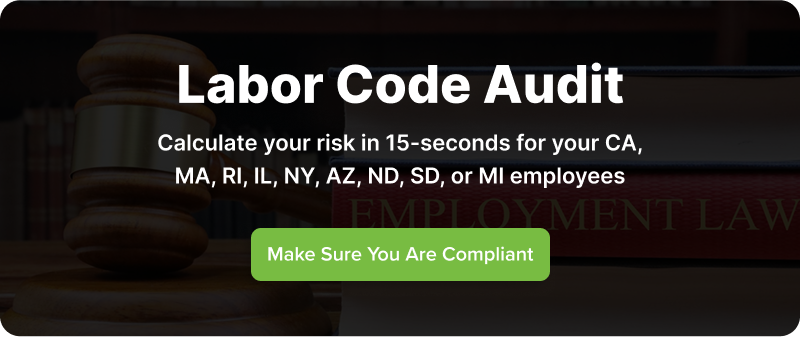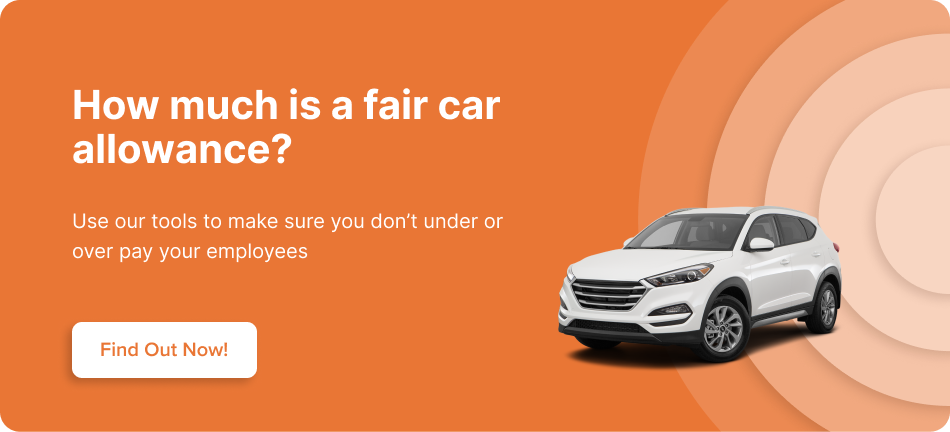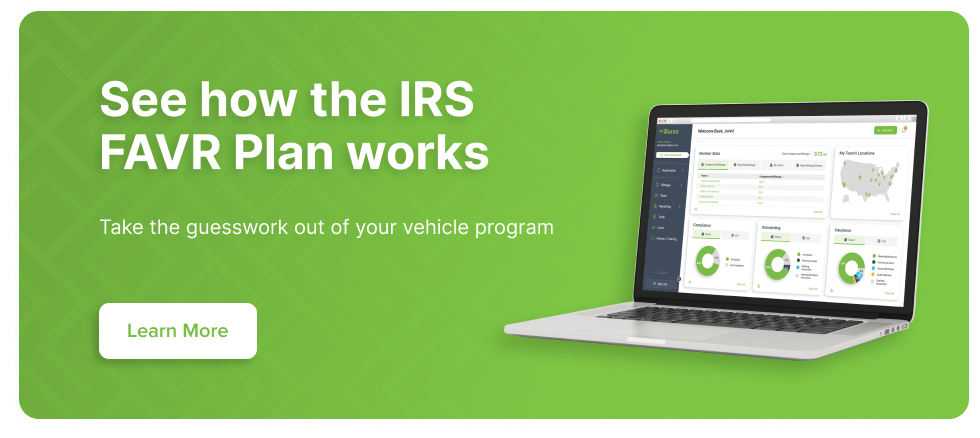If you pay a car allowance to employees working in the state of California, be aware that these workers face a unique set of conditions. Between strict labor laws and high vehicle expenses, California employees require a reimbursement model that excludes most car allowances.
California reimbursement laws, car allowances & inflated vehicle costs
California's labor code fully protects employees from incurring business expenses. This is known as employee expense indemnification. California is not alone in providing this legal protection to employees – a few other states indemnify employees as well – but high vehicle costs set CA drivers apart.
California gas prices vs. national average
In May 2025 most Americans are paying around $3 per gallon for gas. But many CA drivers are paying closer to $5 per gallon. For national businesses that pay a car allowance, this discrepancy can pose a problem. Your CA employees will experience higher costs on average than employees in many other states.
California labor law Section 2802
Section 2802 of California's Labor Code grants employees the right to sue for the recovery of lost income. Employees can legally recover unreimbursed business expenses, plus legal fees, plus 10% extra. As a result, businesses operating in the state of California must ensure their vehicle allowance procedures fully cover employee costs. This is especially important, given that many vehicle costs are at historic highs.
Standard car allowances and California reimbursement laws
Many employers across the country pay a standard car allowance to cover vehicle expenses incurred for work purposes. This is a simple and straightforward approach. This approach often falls short in California, leaving employers exposed to labor code violations and lawsuits.
State vs. national vehicle allowances
Often, organizations pay the same car allowance across the country. This can mean that the amount falls short in California because its drivers face higher-than-average expenses. Or the company pays higher allowances than necessary in other parts of the country to keep employees happy who work in expensive regions. Neither situation is desirable.
Taxes on California car allowances
Adding to the problem is taxation. A standard car allowance is taxable, and yes, if you're asking, is car allowance taxable in California? The answer is yes. Unless the company uses a business substantiation procedure, such as mileage tracking or FAVR. This means that 30 to 40% of most drivers' allowance goes to income and payroll taxes. Thus, a $600/month payment might be reduced to $360. That will not work in California.
IRS tax rules and CA business reimbursements
Under the current tax code, employees are not eligible to claim the unreimbursed business expense deduction. Once this rule went into effect, employees have been finding ways to protect their take-home pay. In California, this can mean turning to Section 2802 of the Labor Code.
Employees who received a car allowance were accustomed to being able to write off their business mileage every tax season until the spring of 2019. For these employees, the tax cuts amounted to pay cuts. However, California reimbursement laws provide workers with recourse to require their employers to cover any expenses not covered by the mileage deduction.
This situation, combined with record inflation, leaves employers highly vulnerable to employee complaints, attrition, labor code fines, and class-action lawsuits. That is especially the case if that company pays a standard car allowance to California employees.
What car reimbursement method complies with California law?
Simply increasing your car allowance may prove costlier than doing nothing. Yet doing nothing will leave you exposed to an unacceptable level of risk due to labor code violations.
Here are the options for code-compliant California car reimbursements:
1. Easy but expensive: pay the IRS business mileage rate
Many organizations take the simplest, least risky route of all the risky options: paying the IRS mileage rate for California vehicle reimbursements. This approach, however, is not the best option.
Too expensive
The 2025 IRS mileage rate is 70 cents per mile. For the average driver (15,000 miles per year), that's $875 per month. Switching from a car allowance to the standard federal rate is costly and adds the complexity of employee-reported mileage, which makes cost-control a huge challenge.
Over time, if employees find that the IRS mileage rate under-reimburses them (and it may in some parts of California), they will find ways to boost their reimbursement, by over-reporting mileage or “driving for dollars.”
Not quantifiable
The IRS rate is not quantifiable. Sure, you’re paying the maximum allowable non-taxed amount, but how do you know whether the IRS mileage rate is too much, too little, or just right? And what about the significant inequities that exist between low-mileage and high-mileage drivers?
The IRS rate could soon be challenged in California as not complying with CA Labor Code 2802 because it’s not quantifiable.
2. Challenging but cost-effective: pay a quantifiable vehicle reimbursement.
There are three approaches to quantifiable reimbursement:
- Pay actual vehicle expenses for each employee.
- Pay a standard amount to all employees and then pay additional compensation to cover the expense of a personal vehicle.
- Pay a fixed and variable rate reimbursement (FAVR), an IRS-approved procedure for accurate reimbursement.
1. Actual expense method
The problem with the first approach is that it’s extremely difficult, very expensive, and administratively burdensome. The more employees you have, the harder it gets – no one likes keeping track of receipts.
2. Additional compensation for vehicle
The second approach is less time-consuming but still administratively complex. This method still involves tax withholding and still leaves open the possibility that you will under-reimburse some employees and violate a labor code.
3. FAVR car allowance (fixed and variable rate)
The third approach, FAVR, is administratively complex as well, but it is the best approach. FAVR is considered the gold standard for not just California vehicle reimbursement but ALL vehicle reimbursement. This mehtod is transparent, based on actual data, and defensible.
Why FAVR car allowances are the best California vehicle reimbursement
FAVR reimbursement uses vehicle and geographic data to provide quantifiable payments. As a result FAR allowances fully comply with even the strictest state labor laws.
Operating a FAVR program cost-effectively often requires a third-party partner like mBurse. But the advantage is, you don’t have to devote administrative resources to matching employee expense data with reimbursements.
How FAVR programs work in California
This is how the program works:
- You select the appropriate standard vehicle for each employee role that requires reimbursement.
- Your partner generates individualized reimbursement rates based on the standard vehicle and the territory costs of each employee’s garage zip code.
- Using these rates, you provide each employee with a fixed monthly amount to cover fixed expenses plus a variable mileage rate multiplied by employee mileage to cover variable expenses.
For a more in-depth description of how a FAVR plan operates, read our ultimate guide.
How to switch from a standard allowance to a FAVR allowance
A FAVR reimbursement is more accurate than both the IRS mileage rate and a traditional car allowance. The IRS mileage rate is based on an average set of expenses for all American drivers. It is not calculated for your individual employees. FAVR, on the other hand, is calculated for your employees.
A traditional car allowance is a one-size-fits-all approach to employees who incur a variety of expenses. You need an individualized approach, and FAVR is the most cost-effective way to do that.
By switching from a taxable car allowance, you can leverage the eliminated tax waste into an accurate and more robust employee benefit. You also gain an accurate, quantifiable reimbursement and greatly reduce your risk of violating CA Labor Code, Section 2802.
Choosing a FAVR program vendor
Adopting an accurate and quantifiable reimbursement plan will require significant expenditures of time and resources. Someone has to keep track of employee expenses and ensure that all expenses are accurately reimbursed. However, this route is cost-effective if you partner with a vendor who can do the administrative work efficiently.
As you weigh your options, consider partnering with mBurse. Get started by comparing your current plan with an mBurse FAVR plan.


